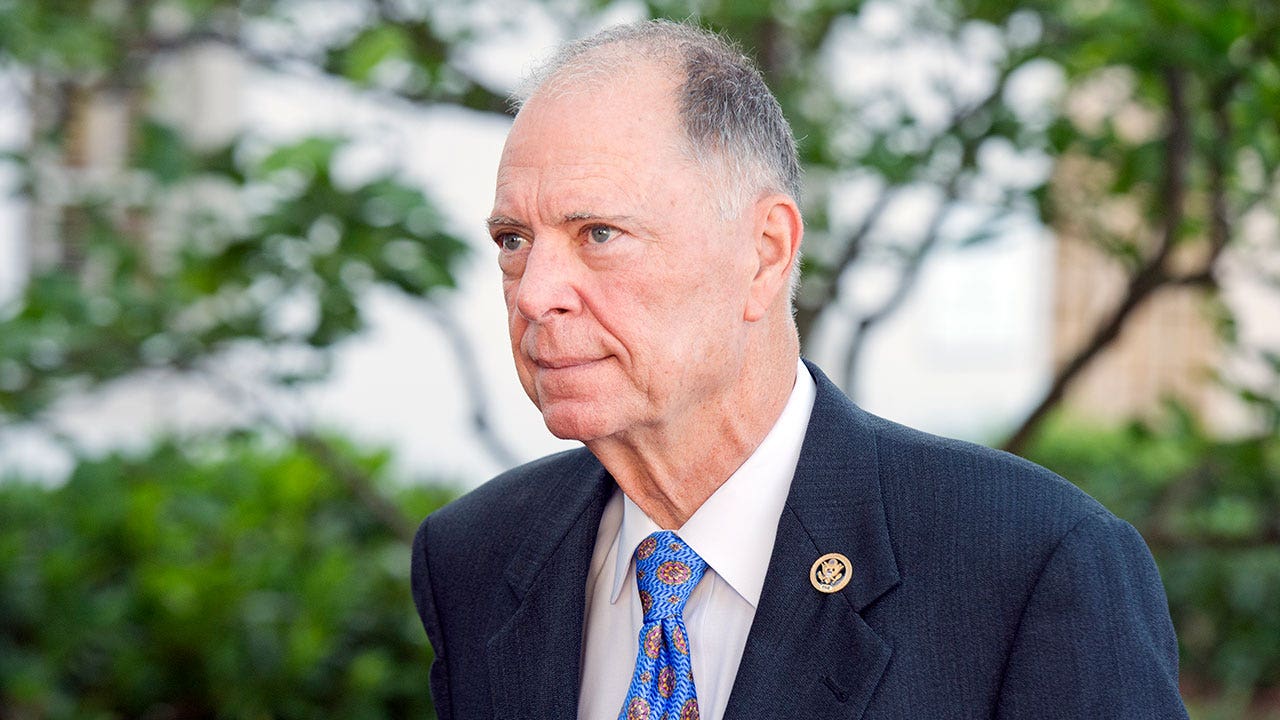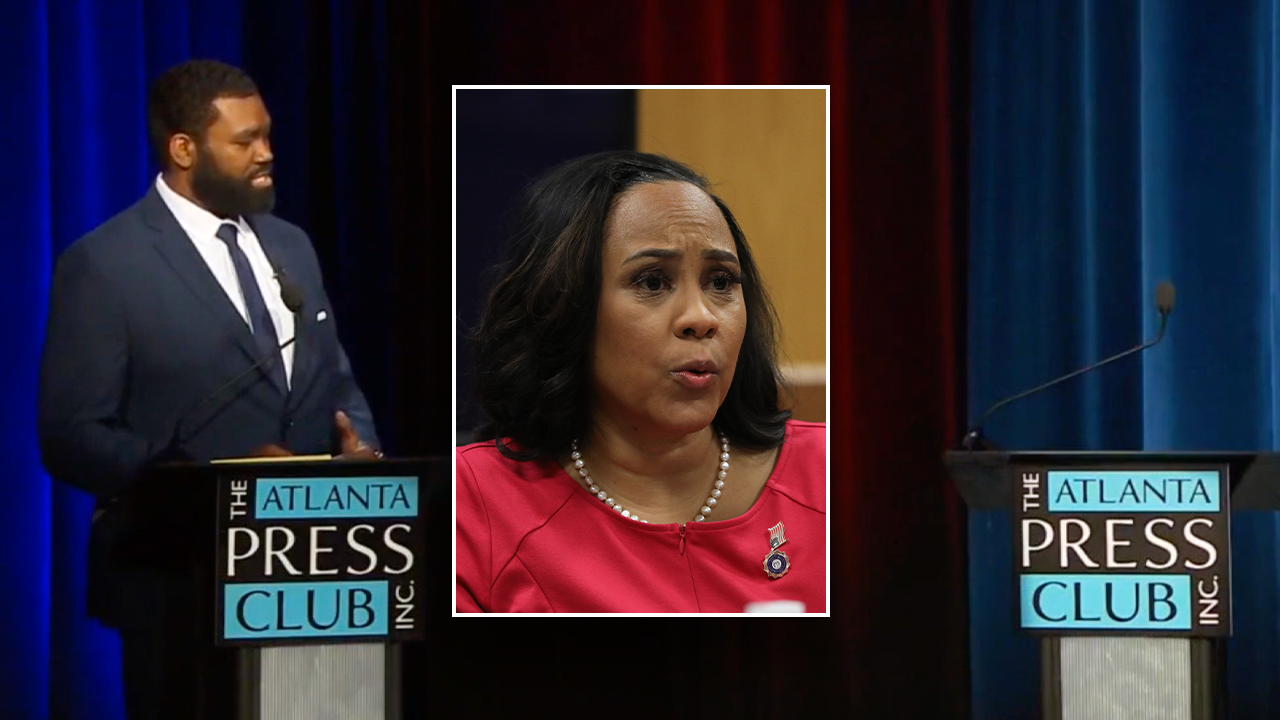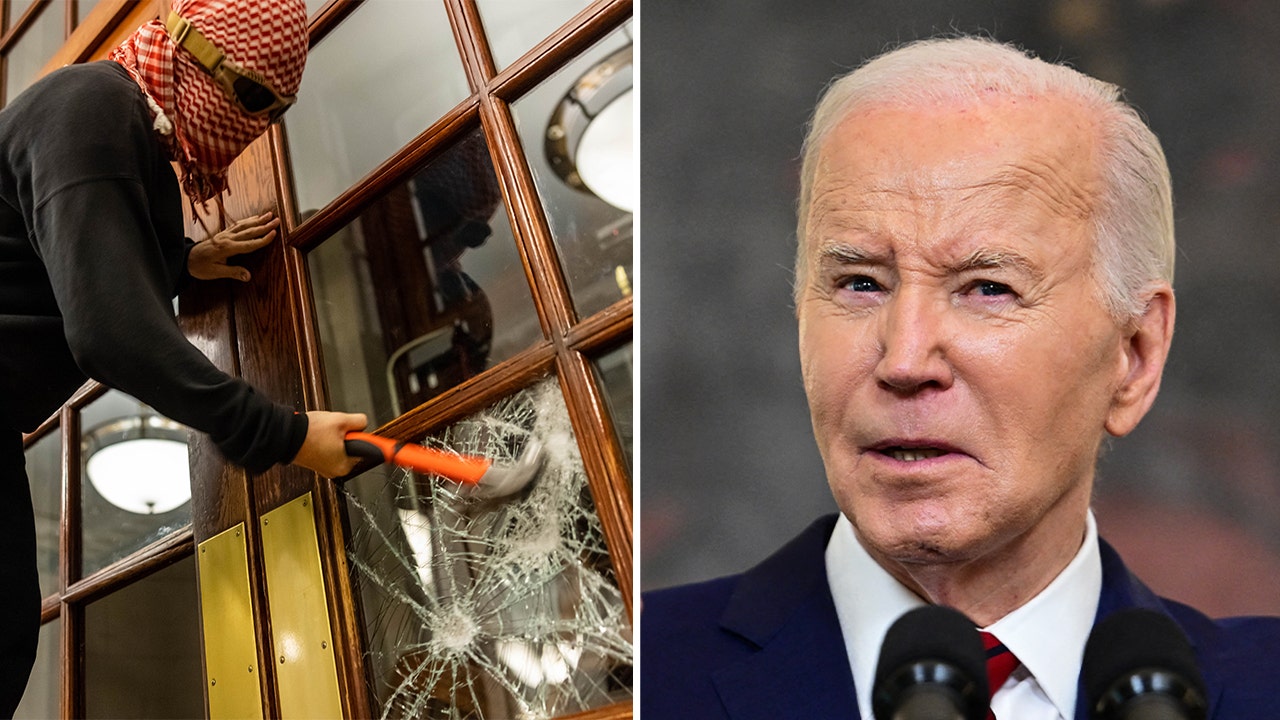Education
Changes Bring Friction, and Lawsuits, to Florida College Targeted by DeSantis

As the fall semester began at New College of Florida, a small public school known as proudly unconventional until Gov. Ron DeSantis set about overhauling it this year, new students were easy to spot.
Many were recruited athletes, clad in T-shirts branded with the school’s new mascot, a muscled, flexing banyan tree. They stood out from returning students, many of whom roamed the campus in bare feet or with vividly dyed hair.
“Will these people be OK with us being weird as we are?” said Emma Curtis, a 21-year-old fourth-year student, voicing a concern shared by others.
The influx of athletes is just one of the sweeping changes that have come to New College since Mr. DeSantis and his allies vowed in January to transform the liberal arts institution, known as Florida’s “public honors college,” into a bastion of conservatism. More than a third of last year’s faculty members — about three dozen — are gone. So are about 125 students who chose not to return.
In a school that last year had about 700 students total, the freshman class of 338 is the largest ever; it also has a higher proportion of Black, Hispanic and male students than previous ones did, according to the administration. More than 200 students have been moved from on-campus dorms to off-campus hotels to make room for the recruited athletes and other new students.
The pronounced change in climate has led to a flurry of legal challenges. Alumni, faculty and students have sued, claiming free-speech violations that they say amount to academic censorship. The U.S. Department of Education is investigating a complaint that New College, in its new iteration, discriminated based on disability. An alumna accused the new leadership in a separate federal complaint of discriminating against L.G.B.T.Q. students by creating a hostile environment that drove some of them out.
The board of trustees, controlled by DeSantis allies, and the interim president, Richard Corcoran, dismiss the critics as a disgruntled few and cast the overhaul as a success. State lawmakers sent about $50 million to the school this year, a big jump from recent years. New students were offered newly designated scholarships and laptops. Moldy dorms were shut down. And the school created an athletic department, with plans to field six teams.
“What was really missing more than anything else at New College was leadership,” Mr. Corcoran, a former Florida House speaker and state education commissioner, said in an interview. “We’ve been able to do something that wasn’t accomplished in 63 years at the college, and that was grow enrollment. We did it at a time of complete upheaval and negative publicity.”
Much of Mr. DeSantis’s criticism of New College before the overhaul centered on what he characterized as “woke indoctrination” on college campuses. One of the new leadership’s first acts was eliminating the college’s diversity office; soon after, the diversity chief and the academic librarian, both members of the L.G.B.T.Q. community, were fired.
The board of trustees’s faculty representative quit after five professors were denied tenure because of what Mr. Corcoran called a move toward “a more traditional liberal arts institution.” Some new administrators hired into top posts did not have a background in academia, but rather connections to Republican state politics.
“The board wasn’t looking for reasonable change at a reasonable pace,” said Matthew Lepinski, the computer science professor who resigned from the board and then from the school. “They were interested in making change so fast that they didn’t care what they broke.”
The reconfigured board voted to abolish New College’s gender studies program, which one trustee called “more of an ideological movement” than an academic discipline. The school’s only full-time gender studies professor quit, writing in his resignation letter that Florida was “the state where learning goes to die.”
Gone are gender-neutral bathrooms, hallway art that in some cases featured nudity and student murals that had been completed in February and were expected to remain for several years. Student orientation leaders had to remove Black Lives Matter and Pride pins from their polo shirts. A student government election this week pitted a returning student against a new student backed by a newly formed campus chapter of the conservative organization Turning Point USA.
Dan Duprez, a former New College admissions officer, said he was troubled by the tactics used to grow the incoming class, noting that the grade-point averages and standardized test scores of new students were lower than those of past freshman classes. He recalled a colleague showing him an admissions essay that was a screenshot of cellphone notes, “riddled with incorrect spelling and grammar, saying, basically, ‘I just want to play ball.’”
“That person went on to be accepted,” Mr. Duprez said.
Administrators say they had little time to recruit the large incoming class that they wanted. Many top athletes had already committed to other schools, and critics say New College recruited students heavily from Christian schools. Mr. DeSantis has said he wants New College to model itself after Hillsdale College, a private Christian institution in Michigan.
Mariano Jimenez Jr., the athletic director and baseball coach, who used to work at a private Christian high school, said the school brought in academic counselors to keep athletes on track, as other schools routinely do: “We’re going to show that these athletes are going to be held to a high standard.”
Several athletes declined to speak to a reporter. The college declined a request to make athletes available for interviews.
One who did agree to a brief interview, Tyrone Smith, a 20-year-old basketball player, said he transferred from the University of South Florida in part because of New College’s academics. “The professors know your name,” he said.
Friction over the athletes’ arrival grew after many of them were assigned to apartment-style dorms, displacing more senior students. Other dorms were deemed unsafe because of mold, which Mr. Corcoran said should have been addressed by earlier administrations. Many students ended up in three nearby hotels.
Atticus Dickson, a 19-year-old religious studies student assigned to live at a Hyatt Place, described the inconvenience of having to catch a shuttle or hitch a ride just to get to class: “My job is on campus, and I stay on campus late.”
There have been other sources of uncertainty. Annie Dong, a 21-year-old art and psychology student in her fourth year, said the culture no longer felt as positive and welcoming.
“The community has changed,” she said. “There is also anxiety just being on campus.”
Parents and students reported classes being canceled shortly before the start of the semester, a claim Mr. Corcoran denied despite the faculty upheaval. Visiting faculty have been hired for this school year.
“I was doing an internship at an organic chemistry lab,” said Olivia Pare, a 20-year-old biology student entering her third year, who transferred. “The professor I was doing that with was denied tenure, and that was the last straw for me.”
More than 30 students have transferred to Hampshire College, a private liberal arts school in Amherst, Mass., that offered to match New College students’ tuition.
One of them, Libby Harrity, 20, withdrew from New College as part of a deal for misdemeanor battery charges against her to be dropped. Christopher Rufo, a trustee appointed by Mr. DeSantis, had accused her of spitting at him during a campus protest in May. (Ms. Harrity denied his version of events.)
Ms. Harrity — who got a tattoo of New College’s quirky former mascot, a pair of empty brackets denoting a math concept known as the null set — said that she is grateful for Hampshire’s tuition match, though her housing and travel home will be more expensive.
“I’m hurt,” she said of her departure from New College. “They have come in and taken everything that made it good and charming and removed as much of it as possible.”
Ms. Curtis, an art and psychology student, stayed at New College, though she is considering dropping her psychology concentration. The dorm she expected to live in was closed, leaving her to scramble for alternative on-campus housing. She was one of six students whose murals — hers depicted sandhill cranes — were painted over without notice, which she said sent a painful message: “‘We don’t want your work here.’”
She let her pink hair dye fade and her mullet grow out before returning to school — for fear, she said, that administrators and new students would judge her. She is trying to get through her art coursework and graduate as soon as possible.

Education
How Counterprotesters at U.C.L.A. Provoked Violence, Unchecked for Hours

A satellite image of the UCLA campus.
On Tuesday night, violence erupted at an encampment that pro-Palestinian protesters had set up on April 25.
The image is annotated to show the extent of the pro-Palestinian encampment, which takes up the width of the plaza between Powell Library and Royce Hall.
The clashes began after counterprotesters tried to dismantle the encampment’s barricade. Pro-Palestinian protesters rushed to rebuild it, and violence ensued.
Arrows denote pro-Israeli counterprotesters moving towards the barricade at the edge of the encampment. Arrows show pro-Palestinian counterprotesters moving up against the same barricade.
Police arrived hours later, but they did not intervene immediately.
An arrow denotes police arriving from the same direction as the counterprotesters and moving towards the barricade.
A New York Times examination of more than 100 videos from clashes at the University of California, Los Angeles, found that violence ebbed and flowed for nearly five hours, mostly with little or no police intervention. The violence had been instigated by dozens of people who are seen in videos counterprotesting the encampment.
The videos showed counterprotesters attacking students in the pro-Palestinian encampment for several hours, including beating them with sticks, using chemical sprays and launching fireworks as weapons. As of Friday, no arrests had been made in connection with the attack.
To build a timeline of the events that night, The Times analyzed two livestreams, along with social media videos captured by journalists and witnesses.
The melee began when a group of counterprotesters started tearing away metal barriers that had been in place to cordon off pro-Palestinian protesters. Hours earlier, U.C.L.A. officials had declared the encampment illegal.
Security personnel hired by the university are seen in yellow vests standing to the side throughout the incident. A university spokesperson declined to comment on the security staff’s response.
Mel Buer/The Real News Network
It is not clear how the counterprotest was organized or what allegiances people committing the violence had. The videos show many of the counterprotesters were wearing pro-Israel slogans on their clothing. Some counterprotesters blared music, including Israel’s national anthem, a Hebrew children’s song and “Harbu Darbu,” an Israeli song about the Israel Defense Forces’ campaign in Gaza.
As counterprotesters tossed away metal barricades, one of them was seen trying to strike a person near the encampment, and another threw a piece of wood into it — some of the first signs of violence.
Attacks on the encampment continued for nearly three hours before police arrived.
Counterprotesters shot fireworks toward the encampment at least six times, according to videos analyzed by The Times. One of them went off inside, causing protesters to scream. Another exploded at the edge of the encampment. One was thrown in the direction of a group of protesters who were carrying an injured person out of the encampment.
Mel Buer/The Real News Network
Some counterprotesters sprayed chemicals both into the encampment and directly at people’s faces.
Sean Beckner-Carmitchel via Reuters
At times, counterprotesters swarmed individuals — sometimes a group descended on a single person. They could be seen punching, kicking and attacking people with makeshift weapons, including sticks, traffic cones and wooden boards.
StringersHub via Associated Press, Sergio Olmos/Calmatters
In one video, protesters sheltering inside the encampment can be heard yelling, “Do not engage! Hold the line!”
In some instances, protesters in the encampment are seen fighting back, using chemical spray on counterprotesters trying to tear down barricades or swiping at them with sticks.
Except for a brief attempt to capture a loudspeaker used by counterprotesters, and water bottles being tossed out of the encampment, none of the videos analyzed by The Times show any clear instance of encampment protesters initiating confrontations with counterprotesters beyond defending the barricades.
Shortly before 1 a.m. — more than two hours after the violence erupted — a spokesperson with the mayor’s office posted a statement that said U.C.L.A officials had called the Los Angeles Police Department for help and they were responding “immediately.”
Officers from a separate law enforcement agency — the California Highway Patrol — began assembling nearby, at about 1:45 a.m. Riot police with the L.A.P.D. joined them a few minutes later. Counterprotesters applauded their arrival, chanting “U.S.A., U.S.A., U.S.A.!”
Just four minutes after the officers arrived, counterprotesters attacked a man standing dozens of feet from the officers.
Twenty minutes after police arrive, a video shows a counterprotester spraying a chemical toward the encampment during a scuffle over a metal barricade. Another counterprotester can be seen punching someone in the head near the encampment after swinging a plank at barricades.
Fifteen minutes later, while those in the encampment chanted “Free, free Palestine,” counterprotesters organized a rush toward the barricades. During the rush, a counterprotester pulls away a metal barricade from a woman, yelling “You stand no chance, old lady.”
Throughout the intermittent violence, officers were captured on video standing about 300 feet away from the area for roughly an hour, without stepping in.
It was not until 2:42 a.m. that officers began to move toward the encampment, after which counterprotesters dispersed and the night’s violence between the two camps mostly subsided.
The L.A.P.D. and the California Highway Patrol did not answer questions from The Times about their responses on Tuesday night, deferring to U.C.L.A.
While declining to answer specific questions, a university spokesperson provided a statement to The Times from Mary Osako, U.C.L.A.’s vice chancellor of strategic communications: “We are carefully examining our security processes from that night and are grateful to U.C. President Michael Drake for also calling for an investigation. We are grateful that the fire department and medical personnel were on the scene that night.”
L.A.P.D. officers were seen putting on protective gear and walking toward the barricade around 2:50 a.m. They stood in between the encampment and the counterprotest group, and the counterprotesters began dispersing.
While police continued to stand outside the encampment, a video filmed at 3:32 a.m. shows a man who was walking away from the scene being attacked by a counterprotester, then dragged and pummeled by others. An editor at the U.C.L.A. student newspaper, the Daily Bruin, told The Times the man was a journalist at the paper, and that they were walking with other student journalists who had been covering the violence. The editor said she had also been punched and sprayed in the eyes with a chemical.
On Wednesday, U.C.L.A.’s chancellor, Gene Block, issued a statement calling the actions by “instigators” who attacked the encampment unacceptable. A spokesperson for California Gov. Gavin Newsom criticized campus law enforcement’s delayed response and said it demands answers.
Los Angeles Jewish and Muslim organizations also condemned the attacks. Hussam Ayloush, the director of the Greater Los Angeles Area office of the Council on American-Islamic Relations, called on the California attorney general to investigate the lack of police response. The Jewish Federation Los Angeles blamed U.C.L.A. officials for creating an unsafe environment over months and said the officials had “been systemically slow to respond when law enforcement is desperately needed.”
Fifteen people were reportedly injured in the attack, according to a letter sent by the president of the University of California system to the board of regents.
The night after the attack began, law enforcement warned pro-Palestinian demonstrators to leave the encampment or be arrested. By early Thursday morning, police had dismantled the encampment and arrested more than 200 people from the encampment.
Education
Video: President Biden Addresses Campus Protests

new video loaded: President Biden Addresses Campus Protests
transcript
transcript
President Biden Addresses Campus Protests
President Biden defended the right of demonstrators to protest peacefully, but condemned the “chaos” that has prevailed at many colleges nationwide.
-
Violent protest is not protected. Peaceful protest is. It’s against the law when violence occurs. Destroying property is not a peaceful protest. It’s against the law. Vandalism, trespassing, breaking windows, shutting down campuses, forcing the cancellation of classes and graduations — none of this is a peaceful protest. Threatening people, intimidating people, instilling fear in people is not peaceful protest. It’s against the law. Dissent is essential to democracy, but dissent must never lead to disorder or to denying the rights of others, so students can finish the semester and their college education. There’s the right to protest, but not the right to cause chaos. People have the right to get an education, the right to get a degree, the right to walk across the campus safely without fear of being attacked. But let’s be clear about this as well. There should be no place on any campus — no place in America — for antisemitism or threats of violence against Jewish students. There is no place for hate speech or violence of any kind, whether it’s antisemitism, Islamophobia or discrimination against Arab Americans or Palestinian Americans. It’s simply wrong. There’s no place for racism in America.
Recent episodes in Politics
Education
Where Protesters on U.S. Campuses Have Been Arrested or Detained

Police officers and university administrators have clashed with pro-Palestinian protesters on a growing number of college campuses in recent weeks, arresting students, removing encampments and threatening academic consequences. More than 2,000 people have been arrested or detained on campuses across the country.
Ala.
Alaska Ariz.
Ark.
Calif.
Colo.
Del. Fla.
Ga.
Hawaii
Idaho
Ill. Ind.
Iowa
Kan.
Ky.
La. Maine
Md.
Mass.
Mich.
Minn. Miss.
Mo.
Mont.
Neb.
Nev. N.H.
N.J.
N.M.
N.Y.
N.C. N.D.
Ohio
Okla.
Ore.
Pa. S.C.
S.D.
Tenn.
Texas
Utah Vt.
Va.
Wash.
W.Va.
Wis. Wyo.
Ala. Alaska
Ariz.
Ark.
Calif.
Colo. Del.
Fla.
Ga.
Hawaii
Idaho Ill.
Ind.
Iowa
Kan.
Ky. La.
Maine
Md.
Mass.
Mich. Minn.
Miss.
Mo.
Mont.
Neb. Nev.
N.H.
N.J.
N.M.
N.Y. N.C.
N.D.
Ohio
Okla.
Ore. Pa.
S.C.
S.D.
Tenn.
Texas Utah
Vt.
Va.
Wash.
W.Va. Wis.
Wyo.
Campus protests where arrests and detainments have taken place since April 18
The fresh wave of student activism against the war in Gaza was sparked by the arrests of at least 108 protesters at Columbia University on April 18, after administrators appeared before Congress and promised a crackdown. Since then, tensions between protesters, universities and the police have risen, prompting law enforcement to take action in some of America’s largest cities.
Arizona State University
Tempe, Ariz.
72
Cal Poly Humboldt
Arcata, Calif.
60
Case Western Reserve University
Cleveland, Ohio
20
City College of New York
New York, N.Y.
173
Columbia University
New York, N.Y.
217
Dartmouth College
Hanover, N.H.
90
Emerson College
Boston, Mass.
118
Emory University
Atlanta, Ga.
28
Florida State University
Tallahassee, Fla.
5
Fordham University
New York, N.Y.
15
-

 News1 week ago
News1 week agoBoth sides prepare as Florida's six-week abortion ban is set to take effect Wednesday
-

 Politics1 week ago
Politics1 week agoGOP Rep. Bill Posey won't seek re-election, endorses former Florida Senate President as replacement
-

 World1 week ago
World1 week agoRussian forces gained partial control of Donetsk's Ocheretyne town
-

 World1 week ago
World1 week agoZelenskyy warns of Russian nuclear risks on Chernobyl anniversary
-

 Politics1 week ago
Politics1 week agoHouse Republicans brace for spring legislative sprint with one less GOP vote
-
Movie Reviews1 week ago
Challengers Movie Review
-

 World1 week ago
World1 week agoAt least four dead in US after dozens of tornadoes rip through Oklahoma
-

 Politics1 week ago
Politics1 week agoAnti-Trump DA's no-show at debate leaves challenger facing off against empty podium













